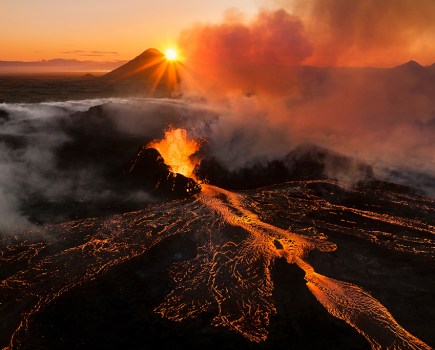Andrew Fusek Peters is a regular contributor to AP and adept at both nature and landscape photography, as his new book reveals. Birds are a particular passion, but he doesn’t need to trek out into the wild – something which can be very difficult at the moment anyway.
He’s been getting a particularly good response recently to images of fighting birds, which he took at home in Shropshire – the shots have appeared on BBC’s Winterwatch and in the national press. We caught up with Andrew to find out more about how to get better images of garden birds, including the ethics of encouraging them to fight.
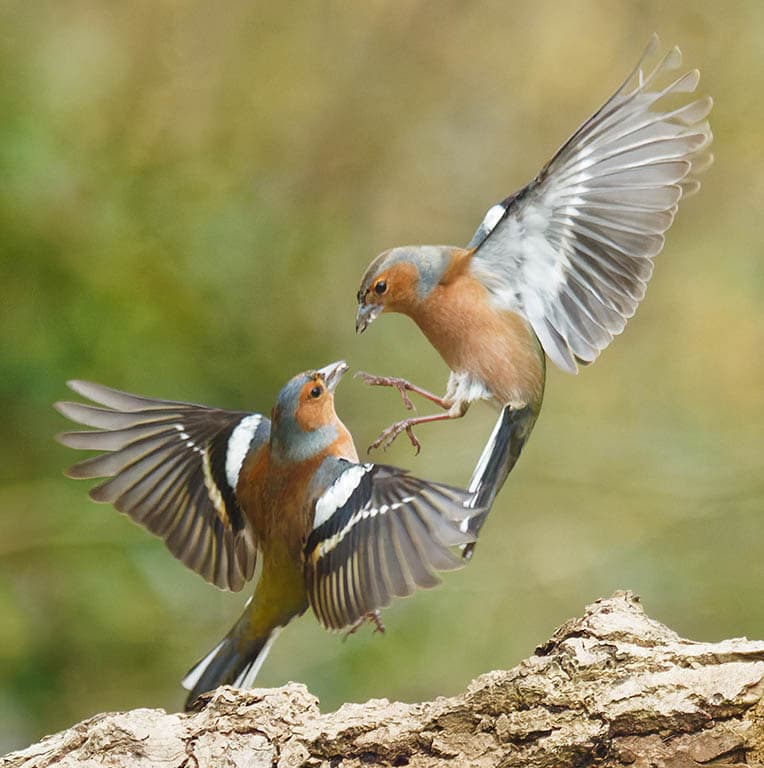
Fighting chaffinches
How do you go about getting these kind of images?
First, you put the feeders out in your garden, but make sure you have spaces between the feeders. Or you can hide seeds inside a log or a watering can, something that you can’t see from the camera’s shooting angle.
The mistake people make is that they put the feeders up and shoot the birds on them, which results in quite a boring image. If you space the feeders apart, a fight might take place in between them, or behind the log containing the seeds, for example.
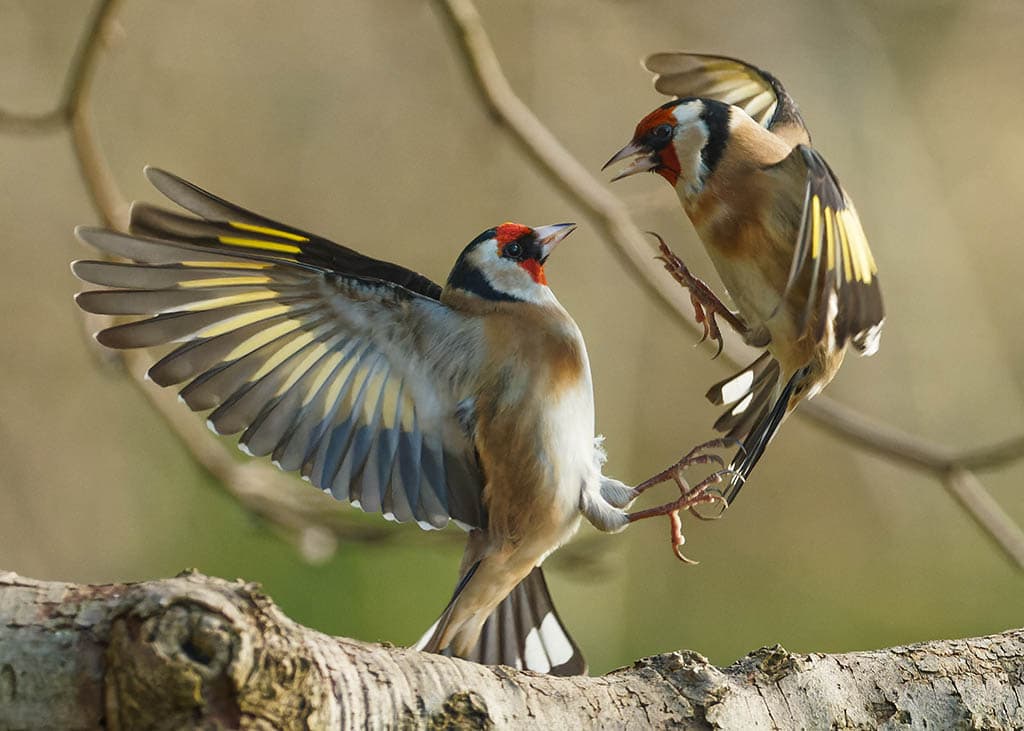
Fighting goldfinches
What about composition?
With the feeders set up, you need to think about what is behind the feeders – you want it to be some distance away, to create amazing bokeh. A messy background will distract from your subject.
So do you shoot through windows?
Yes, you can shoot the birds through glass, including double glazing. It is not a problem so long as the sun isn’t shining on the window or it’s really dirty. Pretty much all the pictures here were taken through double glazing.
I can use my kitchen as a hide, or you can use the living room etc. Just make sure the feeders are away from where you are shooting. You need about a 10ft distance and at least a 300 millimetre lens. I am shooting Olympus but there lots of 70-300mm options for other makes, for example.
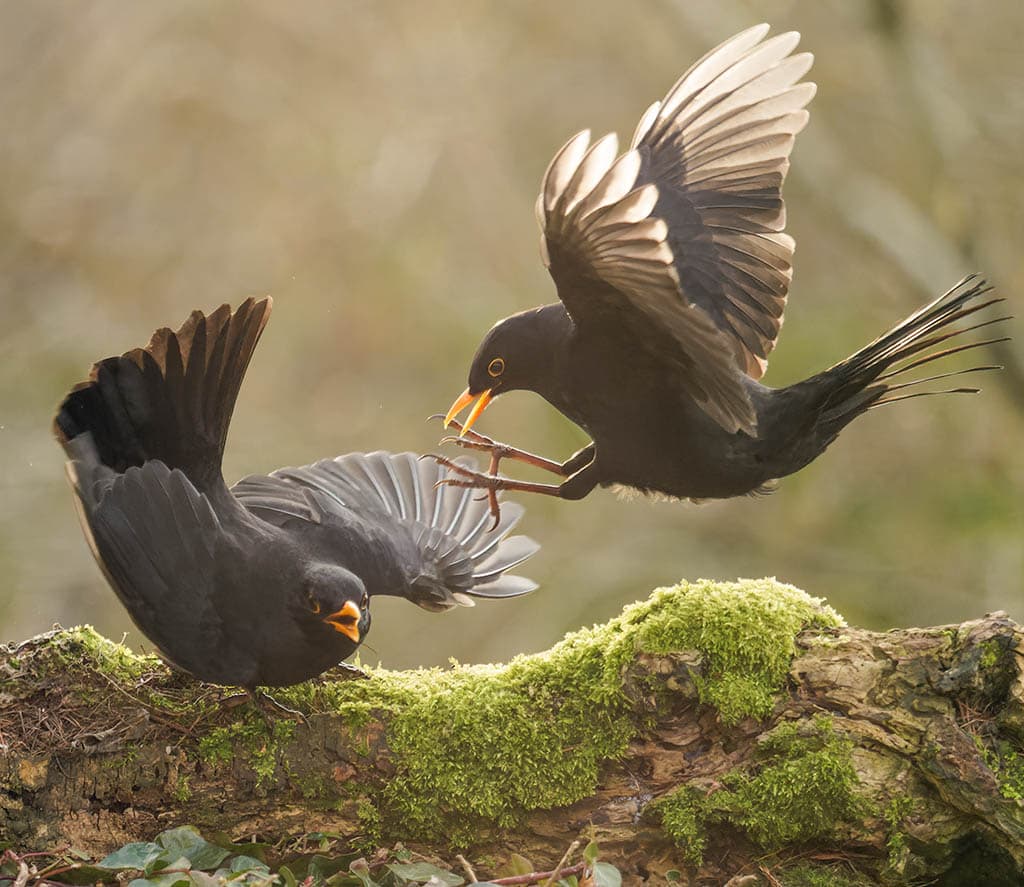
Fighting blackbirds
How do you anticipate what the birds are going to do?
It’s about spending an enormous amount of time studying the birds’ behaviour. You need to try and anticipate what direction they are going to take off and when they are going to fight.
This is one of the hardest things; very often I will take 3,000 to 4,000 shots just to get ONE good frame. People ask me what settings I use and I say it’s not about settings, it’s about studying bird behaviour for five or six years.
Why are you such a fan of Olympus gear for this kind of work?
Micro Four Thirds cameras are nice and compact but some have great features. The Olympus system has a 60fps high-speed mode which is fixed on the first point of focus.
You can focus on the feeder where the action and if the bird then flies in that same plane of focus (at right angles to the feeder) it will be sharp. Even the Sony A1 or Canon EOS R5 would be hard pressed to beat my Olympus gear in some situations.
As mentioned, a big challenge is anticipating the moment when the birds will take off or a fight happens. The ProCapture mode in Olympus helps as it buffers photos. You keep your finger half way down, as the birds fight or fly off, and you don’t miss that moment. It’s like time travel, and is extraordinary.
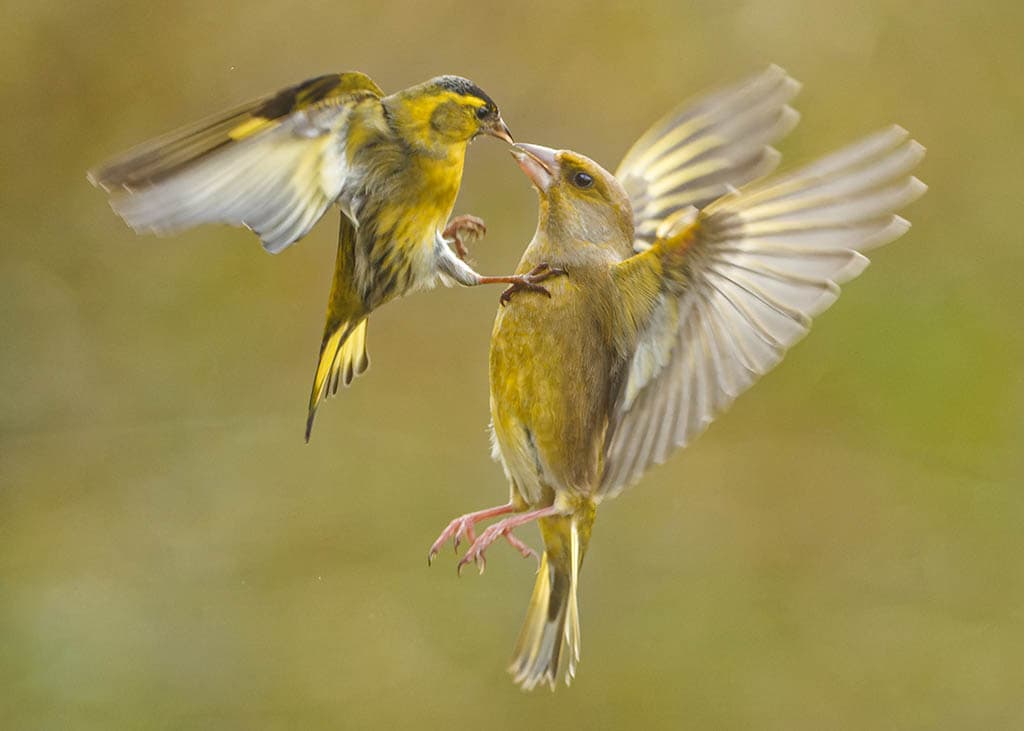
Siskin taking on a greenfinch
Is there a particular time of year to try and shoot fighting birds?
Capturing fights is easier in winter as it’s cold and there is less food around. There are people who use bird feeders all your round but I tend to back off in the spring as there are worms and grubs around. The recent cold snap has been great – I have gone through a 20 kilo sack of sunflower seeds.
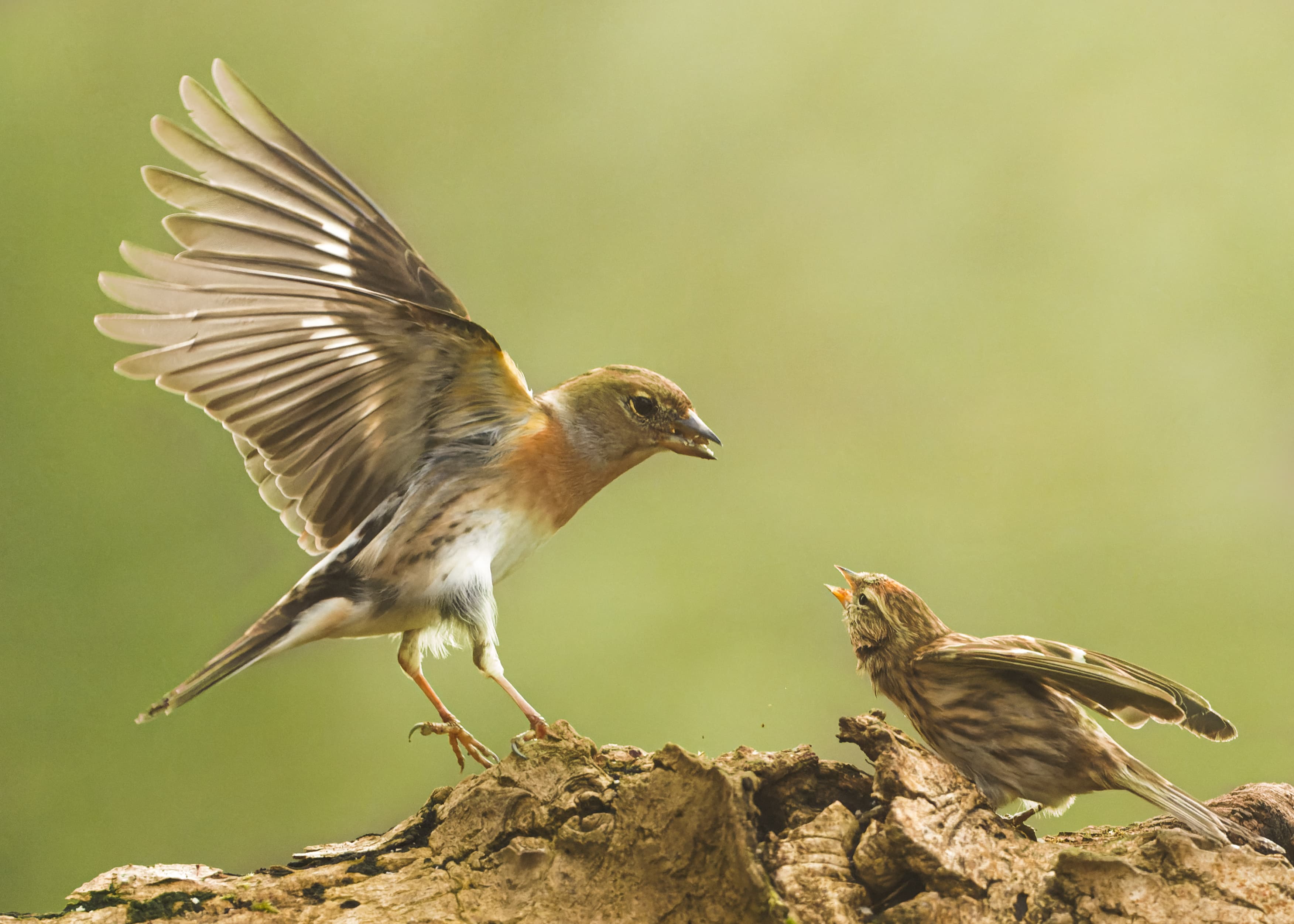
Brambling and redpoll facing off
Is it ethical to encourage birds to fight over food?
I will answer this in two ways. Let’s take the goldfinch, which was in terminal decline in the UK because of changes to practices in the countryside.
Then bird watchers and hobbyist photographers started putting out bird feeders and the decline has been reversed. Garden feeders play a huge conservation role. House sparrows are in terrible decline as they are much more nervous around feeders.
Second, birds fight, it’s what they do! I’m hardly some kind of evil boxing promoter (laughs). It’s not fight club for birds, I am not there with a whip… This is natural behaviour and they are getting a free meal.
Also, some of the greatest pictures of golden eagles came about after somebody put out a kill for them. You could say that is a manufactured shot or you could say it’s often the only way you will be able to photograph that kind of incredible behaviour.
Any editing tips?
I start out in Lightroom then use DxO PhotoLab 4 to reduce noise, as its ‘Deep Prime’ denoise tools are excellent. Micro Four Thirds cameras are sometimes a bit noisy at higher ISOs. Many of these images were taken at 2500, 3200 or even 4000 ISO, and are as clear as a bell after going through PhotoLab 4.
Further reading
Garden bird photography tips
Top tips for sharper wildlife photos
To read more articles like this one subscribe to our print magazine today. You’ll save money every week and enjoy having each issue delivered to your door! Click here.






